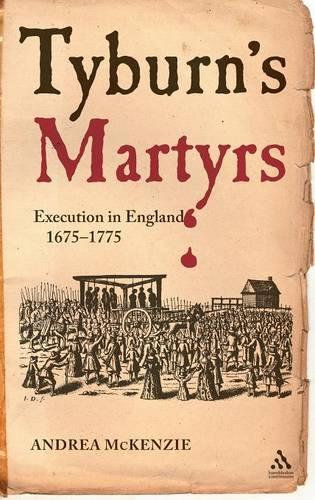
Tyburn's Martyrs: Execution in England, 1675-1775
(Hardback)
Publishing Details
Tyburn's Martyrs: Execution in England, 1675-1775
By (Author) Assistant Professor Andrea McKenzie
Bloomsbury Publishing PLC
Hambledon Continuum
1st October 2007
United Kingdom
Classifications
General
Non Fiction
Penology and punishment
364.66094209033
Physical Properties
Hardback
336
Width 164mm, Height 238mm, Spine 26mm
710g
Description
The public execution at Tyburn is one of the most evocative and familiar of all eighteenth-century images. Whether it elicits horror or prurient fascination - or both - the Tyburn hanging day has become synonymous with the brutality of a bygone age and a legal system which valued property over human life. But, as this fascinating cultural and social history of the gallows reveals, the early modern execution was far more than just a debased spectator sport. The period between the Restoration and the American Revolution witnessed the rise and fall of a vast body of execution literature - last dying speeches and confessions, criminal trials and biographies - featuring the criminal as an Everyman (or Everywoman) holding up a mirror to the sins of his readers. The popularity of such publications reflected the widespread, and persistent, belief in the gallows as a literal preview of God's Tribunal': a sacred space in which solemn oaths, supernatural signs and, above all, courage, could trump the rulings of the secular courts. Here the condemned traitor, "game" highwayman, or model penitent could proclaim not only his or her innocence of a specific crime, but raise larger questions of relative societal guilt and social justice by invoking the disparity between man's justice and God's.
Reviews
There are useful chapters on dying speeches and criminal biographies, contemporary theories of criminality, the rise of the highwaymen, and the ritual of execution 'to provide a cultural history of the seventeenth- and eighteenth century gallows and the larger belief system underpinning it'(26). * The Historian, 2010 *
Author Bio
Andrea McKenzie is Assistant Professor at the Department of History, University of Victoria, Canada. She has published numerous articles on crime and print culture in se venteenth- and eighteenth century England, and is currently working on a cultural history of English courage from the sixteenth to the twentieth century.
